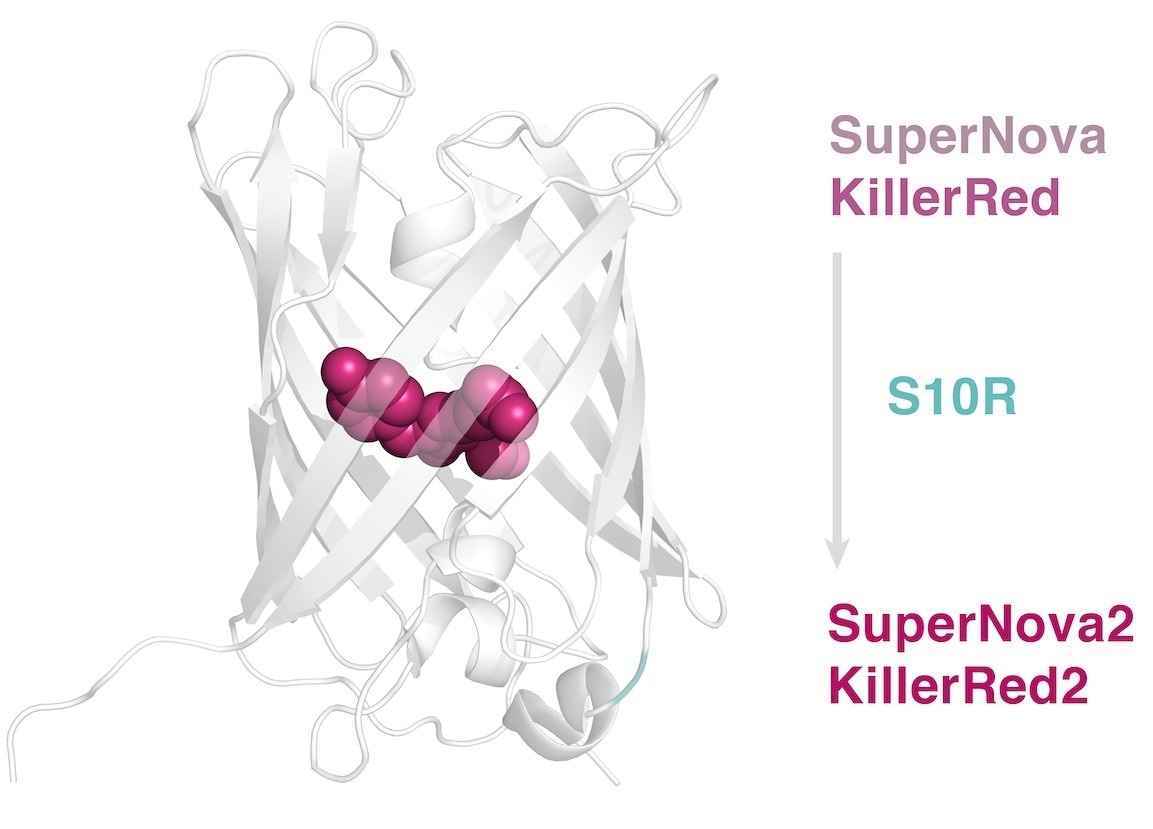A team of researchers from the Skolkovo Institute of Science and Technology (SKOLTECH), the Institute of Bioorganic Chemistry of RAS, and the London Institute of Medical Sciences (LMS) has designed an improved version of a genetically encoded phototoxic synthesizer—called SuperNova—that helps regulate intracellular processes through light exposure.

A single mutation S10R with the replacement of serine at position 10 for arginine (highlighted in blue on the protein structure on the left), despite its removal from the chromophore (highlighted in raspberry), led to an improvement in the properties of the phototoxic fluorescent proteins KillerRed and SuperNova. Image Credit: Skolkovo Institute of Science and Technology (SKOLTECH)
The study was published in the International Journal of Molecular Sciences journal.
Phototoxic proteins are a significant research tool and are utilized as genetically encoded photosensitizers to produce reactive oxygen species under light irradiation. These proteins are different from normal chemical photosensitizers and are genetically encoded and expressed by the cell itself, making them easy to regulate and guide to any selected cell compartment.
Due to the formation of reactive oxygen species caused by the action of light, phototoxic proteins can produce precisely localized oxidative stress, for instance, to impair a selected population of cells or disable proteins of interest—a specifically sought-after trait in the modeling of cellular mechanisms.
KillerRed—the first phototoxic protein—was identified by a group of Russian scientists headed by Konstantin Lukyanov, a professor from the Skoltech Center of Life Sciences (CLS), back in 2006. The KillerRed protein was further improved by Japanese researchers and redubbed SuperNova.
In the latest research work, the team of professor Lukyanov has designed an enhanced version of SuperNova, called SuperNova2, which shows excellent completeness and speed of maturation. The new protein is also monomeric, making it easy to use and appropriate for a wide range of molecular biology functions.
We expect that the genetically encoded photosensitizer SuperNova2 will find use in a wide range of experimental models.”
Konstantin Lukyanov, Professor, Skoltech Center of Life Sciences
Source:
Journal reference:
Gorbachev, D. A., et al. (2020) Genetically Encoded Red Photosensitizers with Enhanced Phototoxicity. International Journal of Molecular Sciences. doi.org/10.3390/ijms21228800.